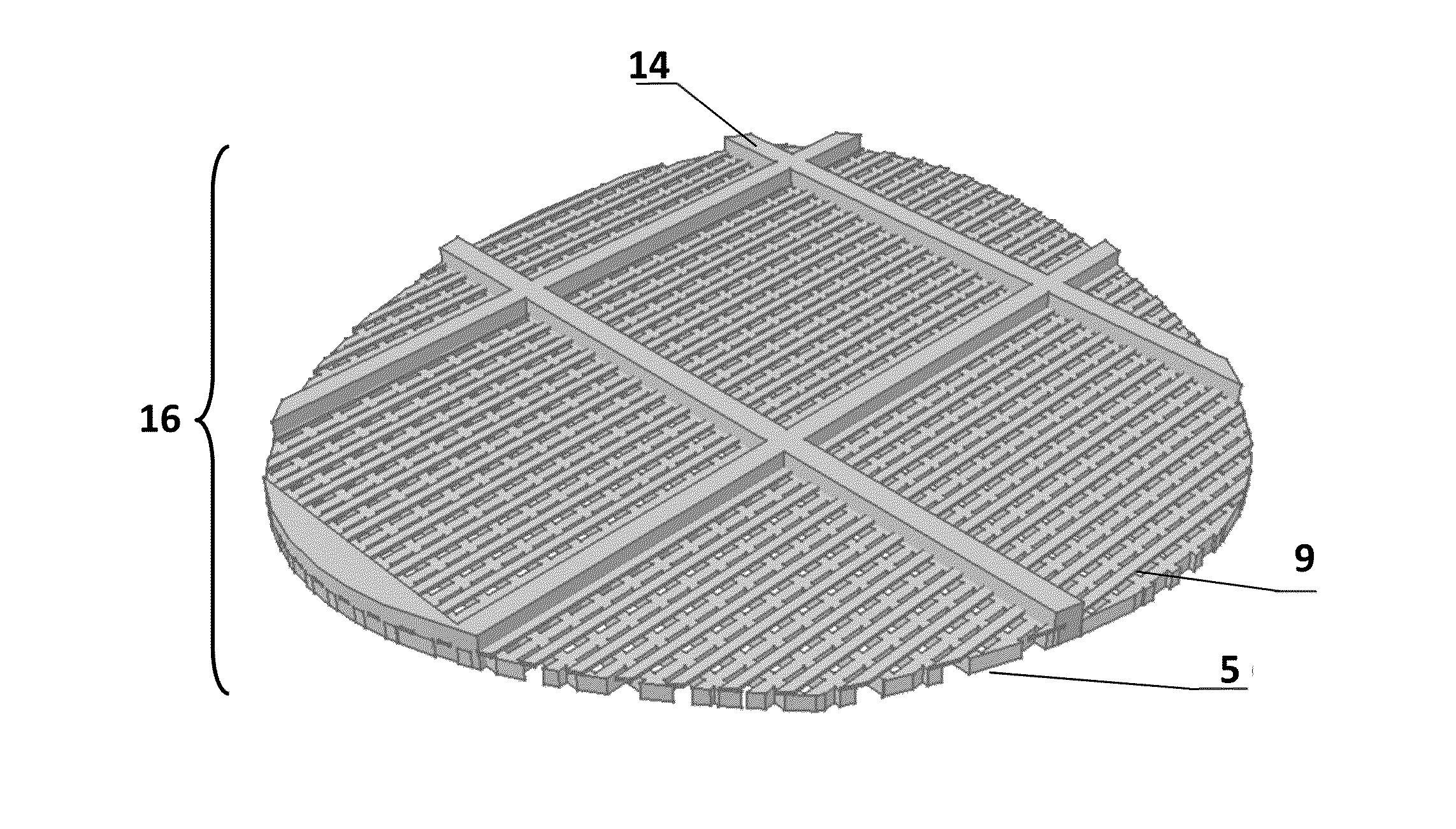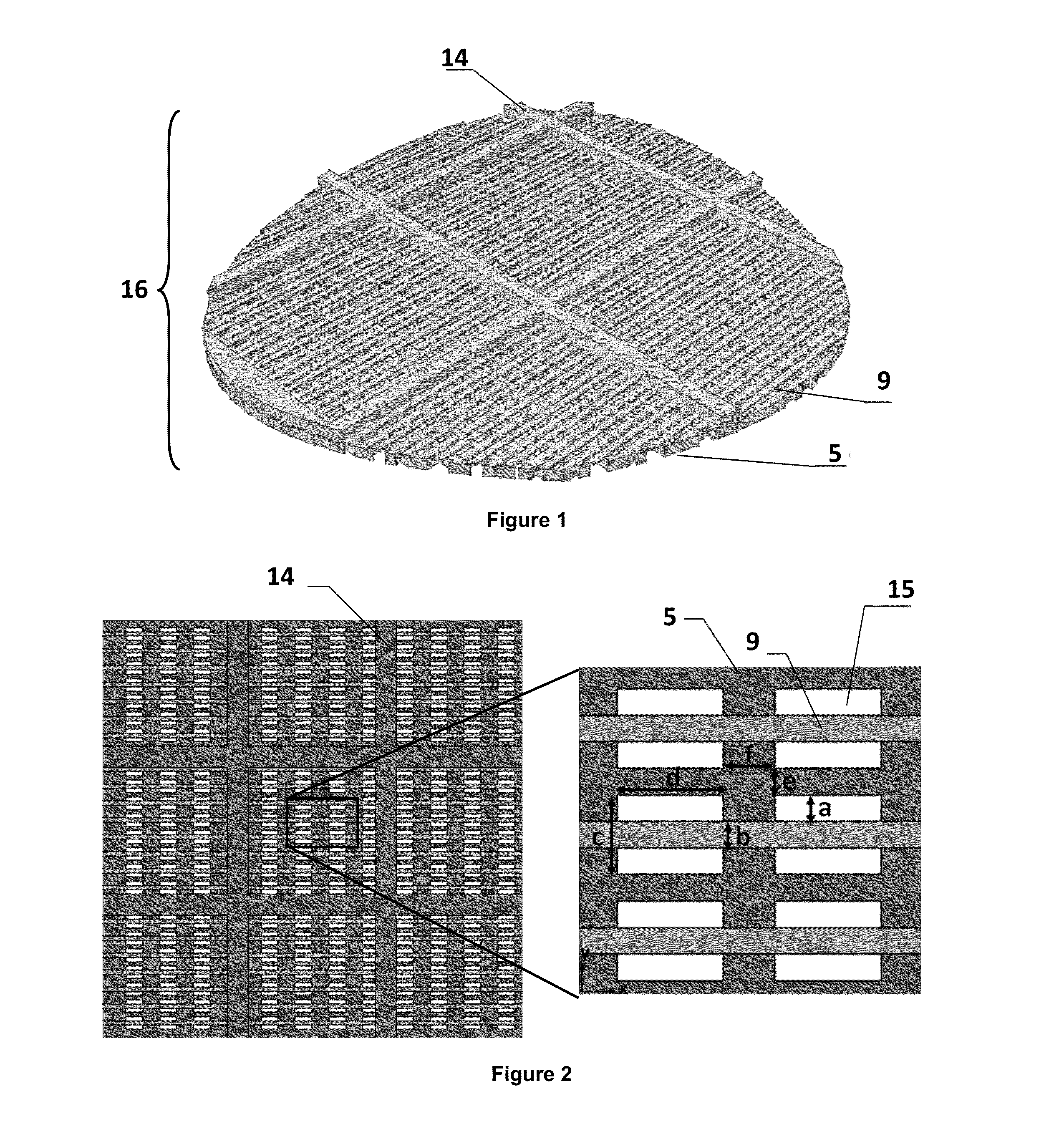Multilayer filter
- Summary
- Abstract
- Description
- Claims
- Application Information
AI Technical Summary
Benefits of technology
Problems solved by technology
Method used
Image
Examples
example 1
Method of Preparing the Filter
[0079]As an example, the method of preparing the multilayer membrane itself is described below. FIG. 1 shows a cut-view of multilayer polymeric membrane schematically, generally at 16, embodying the present invention. In accordance with the present invention, micro / nano-filter membrane includes at least a filter layer that comprises an array of mono-sized pores, and a support layer that includes a precision-shaped support structure (FIG. 2). FIG. 3 also shows the schematic cross-sectional (a.1 to i.1) and 3-D (a.2 to i.2) view of the fabrication process in details. For the purpose of illustration, the filter membrane as shown in FIG. 2 is not to scale. Although, theoretically, the support layer could have a thickness in order of membrane thickness, more typically the filter layer will be substantially thinner than the support structure. In the present invention, the filter layer thickness can be between 0.05-500 μm while the support structure has the th...
example 2
Applications of the Filter
[0100](a) Isolation of C. parvum oocysts
[0101]The capturing capability of the multilayer polymeric filter was verified by a two-step C. parvum oocysts filtration method. In the first step, 10 L of the sample, which was pure water (collected from a Millipore purification unit (MilliQ plus)) spiked with 2×103 heat inactivated C. parvum oocysts (Waterborne Inc. New Orleans, La., USA, Cat No: P102C@1×106) was filtered using a multilayer polymeric micro-sieve. The filtration was performed in dead-end mode using a peristaltic pump at a flow rate of 2 L min−1. The schematic representation of the filtration process and also experimental setup is illustrated in FIGS. 8 and 9, respectively. Upon completion of filtration, containers were rinsed with 2 litres of pure water that were additionally filtered. Then the filtered water goes to a subsequent filtration step using an Anodisc membrane (Whatman, Cat No: 6809-5522) with nominal pore size of 0.2 μm to capture any oo...
PUM
| Property | Measurement | Unit |
|---|---|---|
| Length | aaaaa | aaaaa |
| Size | aaaaa | aaaaa |
| Permeability | aaaaa | aaaaa |
Abstract
Description
Claims
Application Information
 Login to View More
Login to View More - R&D
- Intellectual Property
- Life Sciences
- Materials
- Tech Scout
- Unparalleled Data Quality
- Higher Quality Content
- 60% Fewer Hallucinations
Browse by: Latest US Patents, China's latest patents, Technical Efficacy Thesaurus, Application Domain, Technology Topic, Popular Technical Reports.
© 2025 PatSnap. All rights reserved.Legal|Privacy policy|Modern Slavery Act Transparency Statement|Sitemap|About US| Contact US: help@patsnap.com



